“By Anonymous” can be a frustrating pair of words. It can also be rather fascinating. An anonymous author always stays anonymous for a reason. Perhaps they don’t want to risk their reputation by allowing their identity to become public. Perhaps they prefer having an alter ego through which they can express themselves creatively without fear of interference in their personal life. Perhaps they’re waiting for the right dramatic moment to reveal themselves to the world. Perhaps they passed away with their secret still intact and their family and friends guarded it devotedly (and their descendants still continue to guard it).
There are an infinite number of reasons why the cover of a book doesn’t have a real person’s name on it. Whether the book features a pen name or is missing a name altogether, the text comes with a compelling mystery attached. Who wrote it?
Below are five great books, from classic staples of the literary canon to modern day reads, that circulate the literary scene without an identifiable person to represent them. Their authors are not known, and that information has successfully evaded the thorough investigations of determined scholars and journalists alike. Publishing houses have kept their mouths shut, and reviewers have had to resort to mere speculation.
The stories the books offer continue to exist without confirmed imaginations to trace them back to, which could be considered a major part of their appeal as standalone works of art. You, the reader, can write an essay or hold a lengthy discussion about the book itself, or you can theorize who wrote it. It adds an extra element of fun to the reading experience.
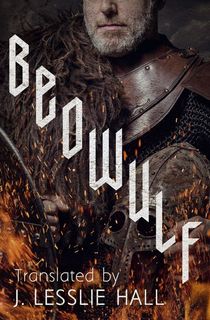
Beowulf
“Then Beowulf spoke—on him the armor shone, the mail-shirt linked by the skills of the smith: Hail to you, Hrothgar! I am Hygelac’s kinsman and devoted thane; already in youth I have done many glorious deeds…”
This epic Old English prose tale of adventure and violence in pagan Scandinavia first made its appearance sometime in the 700-1000 AD bracket. It’s an indisputable, cherished classic which has taken its place on many a university literature course syllabus. It is notable for being one of the most translated works of the English literary world, despite its original author remaining a centuries-old mystery. Everyone who reads fantasy knows of Beowulf, but nobody knows who thought of it first.
The titular character, Beowulf, is a mighty warrior of great renown, who is called upon to undertake a perilous mission. Heorot, the mead hall and stronghold of King Hrothgar, is being terrorized by the bloodthirsty monster Grendel. It is up to Beowulf to defeat Grendel and liberate the mead hall from the beast’s wrath once and for all, but Grendel proves to be not Beowulf’s only dangerous enemy in the text. Beowulf’s strength and heroism will be tested again and again. J.R.R. Tolkien in his lifetime drew much of his Lord of the Rings inspiration from the poem, having been an avid fan, and even expressed his own personal theory of its authorship and timeline.
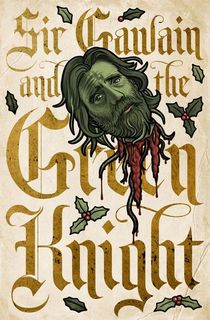
Sir Gawain and the Green Knight
“For, ever faithful in five things, each in fivefold manner, Gawain was reputed good and, like gold well refined, He was devoid of all villainy, every virtue displaying in the field. Thus this Pentangle new, He carried on coat and shield, As man of troth most true, And knightly name annealed.”
Chivalry was thriving in the fourteenth century, and one of the finest examples of chivalric romantic literature was produced in Middle English by an author whose identity has been as evasive to investigators as the Holy Grail. This is another particular favorite of J.R.R. Tolkien, and it holds a special place in the hearts of all fans of Arthurian legends. Like Beowulf, it is a narrative poem that follows the heroic deeds of one central character who is handpicked by destiny to achieve great things.
In the royal court of Camelot, Gawain is an optimistic knight-in-waiting who wants nothing more than to join King Arthur’s prestigious Round Table and prove himself as a great warrior of valor. The opportunity to do just that presents itself in the form of the peculiar and daunting Green Knight, who challenges all men of strength in Camelot to strike him with an axe. The catch is that the striker must accept a brutal return blow on an appointed date. Gawain bravely accepts the challenge, and is unknowingly drawn into a devious series of events full of surprising twists. All the while, Gawain has only one goal: to emerge from his adventure as a fully qualified knight worthy of poetry and songs.
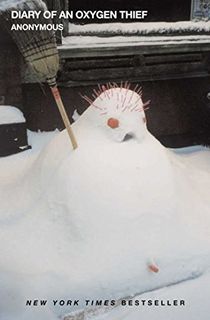
Diary of an Oxygen Thief
“My logic went as follows: If someone hurts you then you automatically want revenge. It doesn’t matter how long it takes, you want revenge. I thought, if I hurt her enough she would want revenge. Therefore, I wouldn’t have to worry about never seeing her again. Because that is what I feared most. The fact that I was losing her.”
Behold the most unlikeable main character on this list. Published in 2006 in the style of a memoir, the author may has deliberately chosen to stay anonymous just so they could get away with making this protagonist as uncomfortably complex and unheroic as possible. This person is no enterprising Beowulf or chivalrous Sir Gawain. He is, as he himself admits in his spiels of self-loathing, a waste of space.
The narrator is an Irish advertising executive with a past fetish for causing his female love interests emotional distress. He is also an alcoholic who attends AA meetings to kick the addiction and start anew. He migrates to the United States where the fast-paced and overly indulgent life of a well-off corporate scoundrel causes his mental health to rapidly plummet. His chance of redemption appears in the form of a beautiful New York photographer, with whom he has the chance of a healthy relationship and future, but he may never consider himself worthy of her.
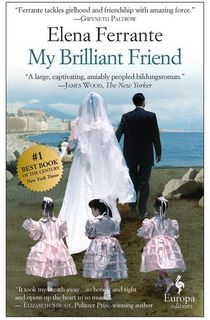
My Brilliant Friend
“There was something unbearable in the things, in the people, in the buildings, in the streets that, only if you reinvented it all, as in a game, became acceptable. The essential, however, was to know how to play, and she and I, only she and I, knew how to do it.”
Released in 2011, My Brilliant Friend is the first of a four-part series produced by an unknown Italian author who operates under the pseudonym Elena Ferrante. The author has revealed little about herself other than the following facts: she is from Naples, her mother was a seamstress, and she has three sisters. Not a lot of clues for literary detectives.
My Brilliant Friend begins with a disappearance and continues the author’s life theme of not wanting to be found. The son of Elena’s old friend Lila calls her to inform her that his mother has run away from home and has left no trace of herself. Elena, who has been close to Lila since childhood, breaks a sacred vow by putting their shared life story down on paper in an attempt to understand her old friend’s actions. The rest of the book follows the pair from childhood to adulthood as they work desperately to escape poverty and intergenerational family curses.
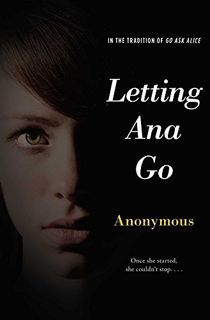
Letting Ana Go
“Anorexia is a disease. You can keep it in remission if you do the right things, but there is no cure. There’s a line that you cross with any compulsive behavior. Once you cross that line, there’s no going back. If you work hard, you can recover, but you’ll always have to stay on your guard.”
Published in 2013, Letting Ana Go is a harrowing coming-of-age “diary” that speaks directly to the young generation’s fears and trials surrounding body image and the pressure to achieve perfection from an early age. The writer of the book, a teenage girl who disguises herself in the text under the simple name Ana, is dangerously obsessed with her weight. Determined not to copy the lifestyle of her depressed, miserable, and morbidly obese mother, Ana develops life-threatening anorexia. Her stern and self-denying food diary and ambitions to become both a track and ballet star become Ana’s emotional crutches as her family life dramatically destabilizes and the money and resources rapidly vanish.
The American health care system, underfunded and underprepared for Ana’s challenging case, is unable to help her and provide the support she really needs. Her financially struggling and distracted parents can’t help her either. Ana is left to suffer virtually alone with her eating disorder and mental illness. She does have her friend Jill, but Jill is also starving herself for athletic purposes, and the two harmfully enable each other’s destructive fixations. Simon & Schuster LLC, the publisher, has still not revealed who the author of this tragic and disturbing young adult book is, over a decade after its release.


